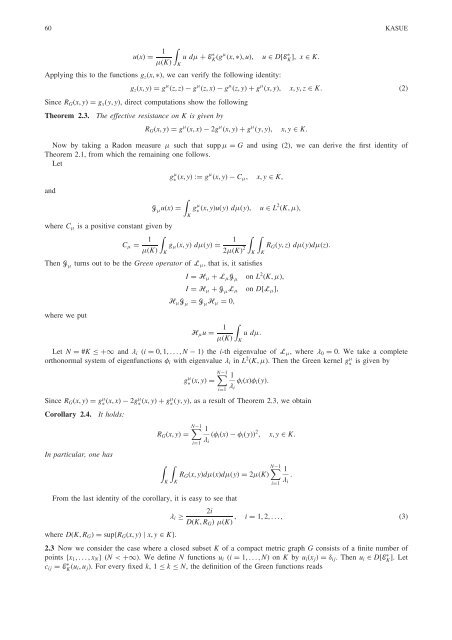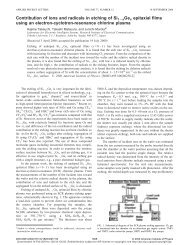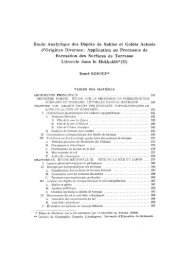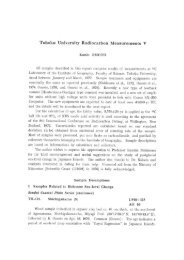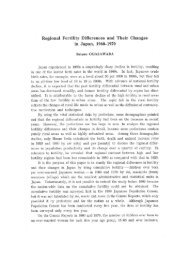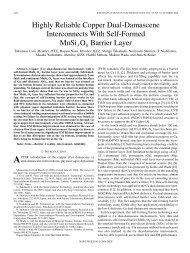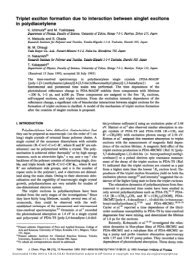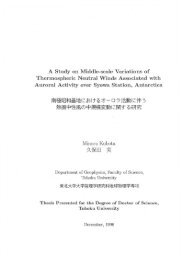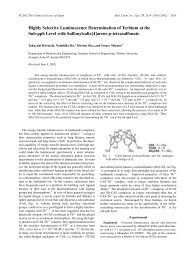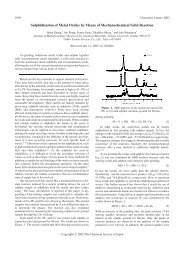Variational Convergence of Finite Networks
Variational Convergence of Finite Networks
Variational Convergence of Finite Networks
You also want an ePaper? Increase the reach of your titles
YUMPU automatically turns print PDFs into web optimized ePapers that Google loves.
60 KASUE<br />
uðxÞ ¼ 1<br />
Z<br />
ud<br />
ðKÞ K<br />
þ EKðg ðx; Þ; uÞ; u 2 D½EKŠ; x 2 K:<br />
Applying this to the functions gzðx; Þ, we can verify the following identity:<br />
gzðx; yÞ ¼g ðz; zÞ g ðz; xÞ g ðz; yÞþg ðx; yÞ; x; y; z 2 K: ð2Þ<br />
Since RGðx; yÞ ¼gxðy; yÞ, direct computations show the following<br />
Theorem 2.3. The effective resistance on K is given by<br />
RGðx; yÞ ¼g ðx; xÞ 2g ðx; yÞþg ðy; yÞ; x; y 2 K:<br />
Now by taking a Radon measure such that supp ¼ G and using (2), we can derive the first identity <strong>of</strong><br />
Theorem 2.1, from which the remaining one follows.<br />
Let<br />
g ðx; yÞ :¼ g ðx; yÞ C ; x; y 2 K;<br />
and<br />
Z<br />
G uðxÞ ¼<br />
K<br />
g ðx; yÞuðyÞ d ðyÞ; u 2 L 2 ðK; Þ;<br />
where C is a positive constant given by<br />
C ¼ 1<br />
Z<br />
1<br />
g ðx; yÞ d ðyÞ ¼<br />
ðKÞ K<br />
2 ðKÞ2 Z Z<br />
RGðy; zÞ d ðyÞd ðzÞ:<br />
K K<br />
Then G turns out to be the Green operator <strong>of</strong> L , that is, it satisfies<br />
I ¼ H þ L G on L2ðK; Þ;<br />
I ¼ H þ G L on D½L Š;<br />
H G ¼ G H ¼ 0;<br />
where we put<br />
H u ¼ 1<br />
Z<br />
ud :<br />
ðKÞ K<br />
Let N ¼ #K þ1and i ði ¼ 0; 1; ...; N 1Þ the i-th eigenvalue <strong>of</strong> L , where 0 ¼ 0. We take a complete<br />
orthonormal system <strong>of</strong> eigenfunctions i with eigenvalue i in L2ðK; Þ. Then the Green kernel g is given by<br />
g ðx; yÞ ¼<br />
XN 1<br />
i¼1<br />
1<br />
i<br />
iðxÞ iðyÞ:<br />
Since RGðx; yÞ ¼g ðx; xÞ 2g ðx; yÞþg ðy; yÞ, as a result <strong>of</strong> Theorem 2.3, we obtain<br />
Corollary 2.4. It holds:<br />
In particular, one has<br />
RGðx; yÞ ¼<br />
Z<br />
K<br />
Z<br />
K<br />
XN 1<br />
i¼1<br />
1<br />
ð iðxÞ iðyÞÞ 2 ; x; y 2 K:<br />
i<br />
XN 1<br />
1<br />
RGðx; yÞd ðxÞd ðyÞ ¼2 ðKÞ :<br />
i¼1 i<br />
From the last identity <strong>of</strong> the corollary, it is easy to see that<br />
i<br />
where DðK; RGÞ ¼supfRGðx; yÞ jx; y 2 Kg.<br />
2i<br />
DðK; RGÞ<br />
;<br />
ðKÞ<br />
i ¼ 1; 2; ...; ð3Þ<br />
2.3 Now we consider the case where a closed subset K <strong>of</strong> a compact metric graph G consists <strong>of</strong> a finite number <strong>of</strong><br />
points fx1; ...; xNg ðN < þ1Þ. We define N functions ui ði ¼ 1; ...; NÞ on K by uiðxjÞ ¼ ij. Then ui 2 D½EKŠ. Let<br />
cij ¼ EKðui; ujÞ. For every fixed k, 1 k N, the definition <strong>of</strong> the Green functions reads


